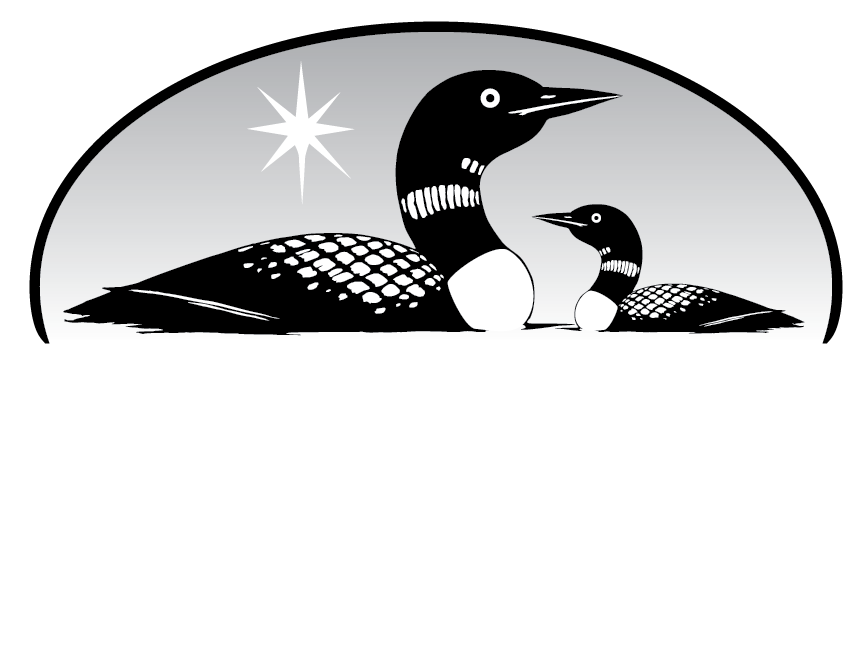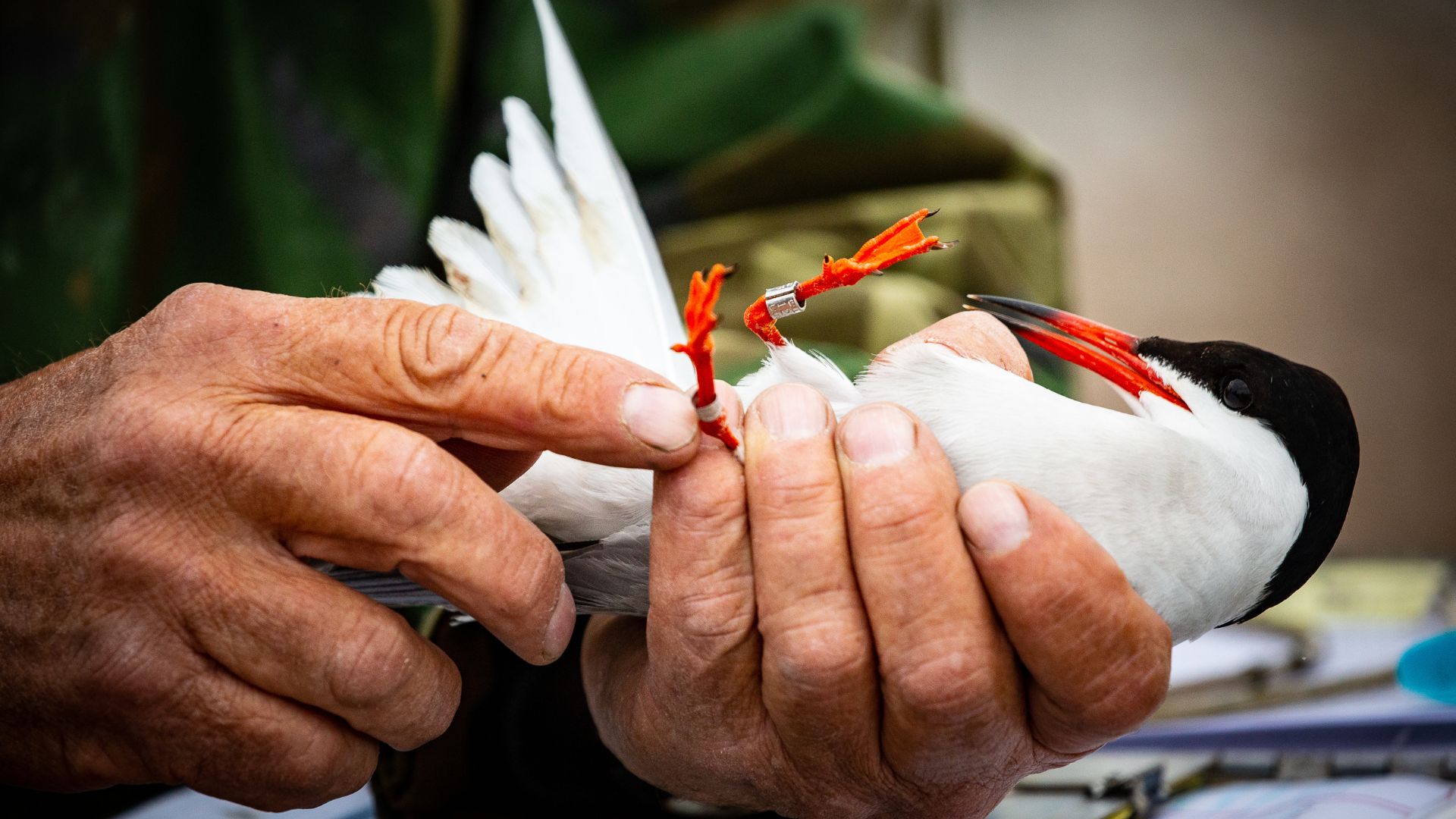
Big problems require a champion, someone with a specific mix of skills, connections, and vision, who can systematically and patiently work a process and stay connected to the larger purpose to bring the vision into reality.
In 2019, Interstate Island and its Common Tern colony needed a champion. The 6-acre dredge spoil island in the Duluth-Superior Harbor began disappearing under dramatically rising water levels starting in 2015.
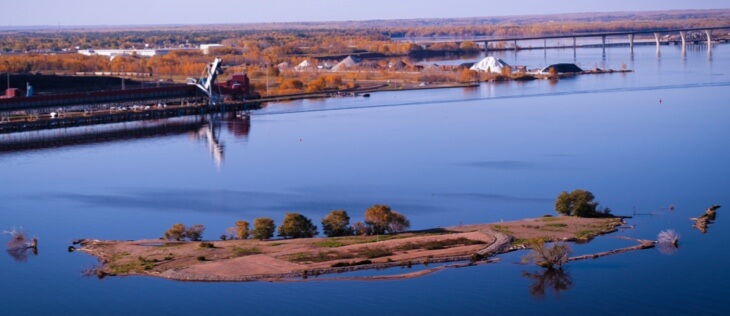
Interstate Island was created in the 1930s as a dredge spoil disposal site. It has been a designated Wildlife Management Area (WMA) since 1983 and is jointly managed by both Minnesota and Wisconsin. Common Tern monitoring on the island began in 1977; a banding program was implemented in 1989 and continues today.
The increasingly submerged island meant a loss of habitat for the terns and their island co-habitants, about 20,000 Ring-billed Gulls. This put the terns and gulls in more direct competition for resources, with the terns on the losing end of things.
Common Terns in the Superior Region
The Common Tern (Sterna hirundo) is a North American long-distance migrating bird that travels between wintering sites as far as 6,000 miles to the south in Argentina, and breeding sites in the northern United States and Canada. The Interstate Island population is known to overwinter on the coast of Peru.
In the Lake Superior Watershed, they return to one of only two remaining colonies. The Interstate Island colony is home to about two hundred birds representing half of the Lake Superior Common Tern population.
Historically, Common Terns were found all over the Lake Superior region and throughout the Duluth-Superior area. However, human activity, including development along the Lake Superior shoreline, displaced them from many of their traditional nesting habitats. In 1989, they were encouraged by wildlife managers to relocate to Interstate Island, which is relatively free of human interference and predation.
According to Audubon, terns are relatively resilient in the face of climate change, though if the climate warms between 1.5 and 3 degrees Celsius it will shift their summer breeding habitat further north into Canada, which could result in the loss of Minnesota’s Common Tern colonies. Terns nest on the ground and lay between one and four eggs.
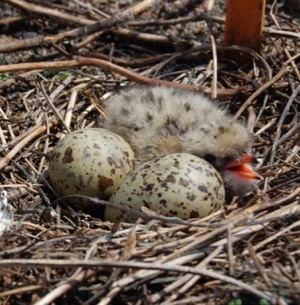
A Good Turn for the Common Tern
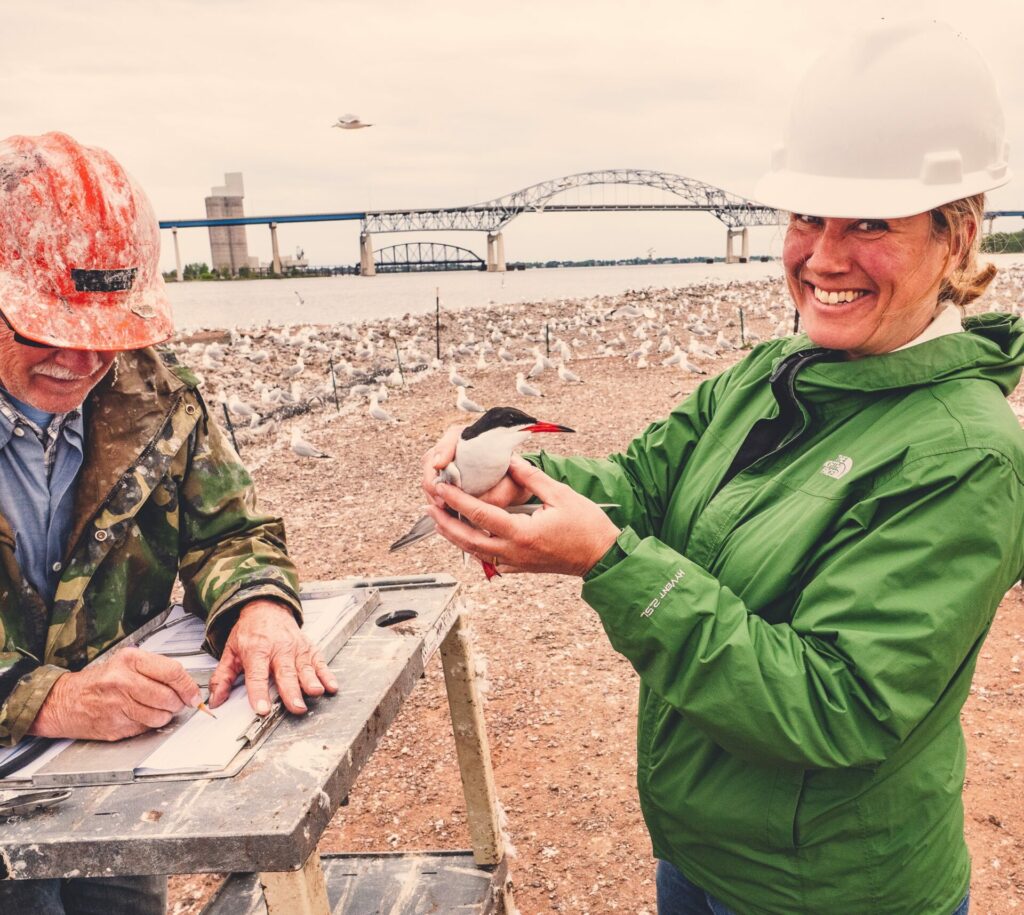
Interstate Island and its Common Tern colony found a champion in the Minnesota Land Trust and Gini Breidenbach, Restoration Program Manager. Breidenbach and Minnesota Land Trust’s involvement was critical to launching this project by bringing much needed organizing capacity and restoration project management expertise to the initiative.
“Minnesota Land Trust was the missing piece in getting this project done,” said Breidenbach, “We had the capacity to write grant proposals and secure funding, bring together the strategic partners to design the project, work through the permitting processes in both Minnesota and Wisconsin, and manage the construction process – it was no small feat!”
Breidenbach managed a strategic coalition of partners, including the Minnesota DNR, Wisconsin DNR, U.S. Fish and Wildlife Service, University of Minnesota – Duluth Natural Resources Research Institute, the U.S. Environmental Protection Agency (EPA) and private design and construction firms to get the project completed in two years.
Adding Interstate Island to the larger St. Louis River Area of Concern Remedial Action Plan further elevated it as a priority initiative.
Breidenbach and partners also identified an opportunity to reduce cost, increase project scope and beneficially use 40,000 cubic yards of sand dredged from the navigation channel by the Army Corps of Engineers.
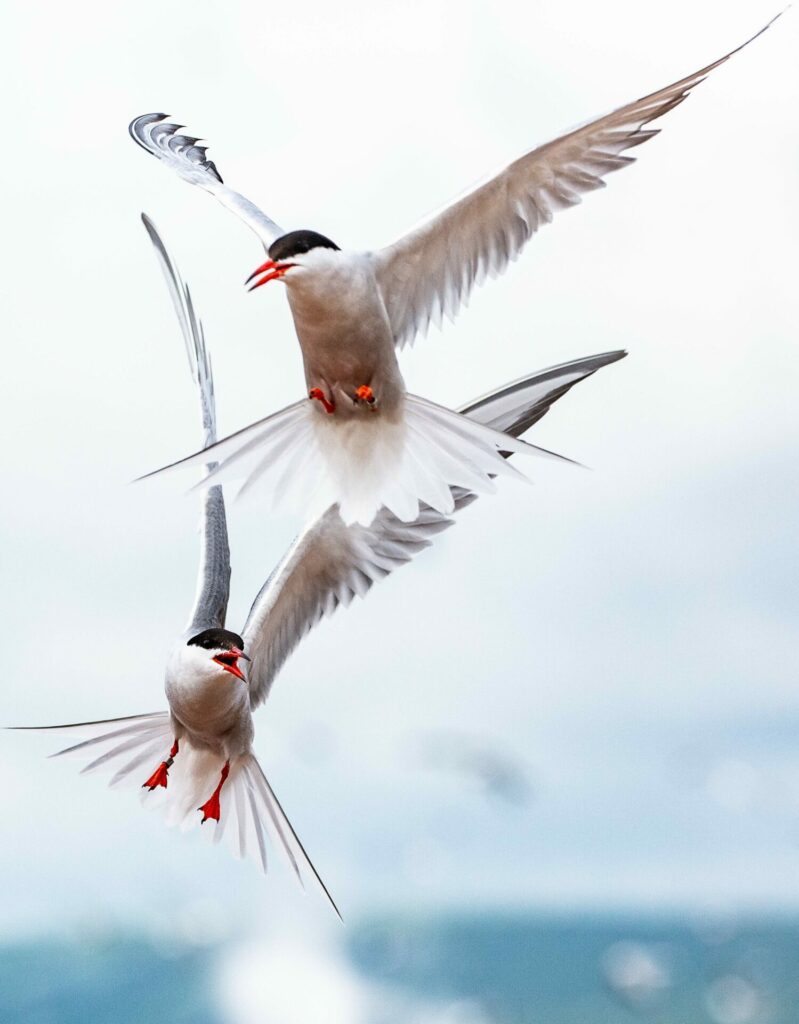
Since 2011, Minnesota Land Trust has played a key role in restoration work in the St. Louis River Estuary. A primary goal of the work being done in the region is to be able to remove the St. Louis River Area of Concern (AOC) from the binational list of most impaired regions on the Great Lakes. Minnesota Land Trust’s estuary projects include Radio Tower Bay, Chambers Grove, wild rice restoration, Perch Lake, and Grassy Point and Kingsbury Bay. Learn more about Minnesota Land Trust’s impact in the St. Louis River Estuary.
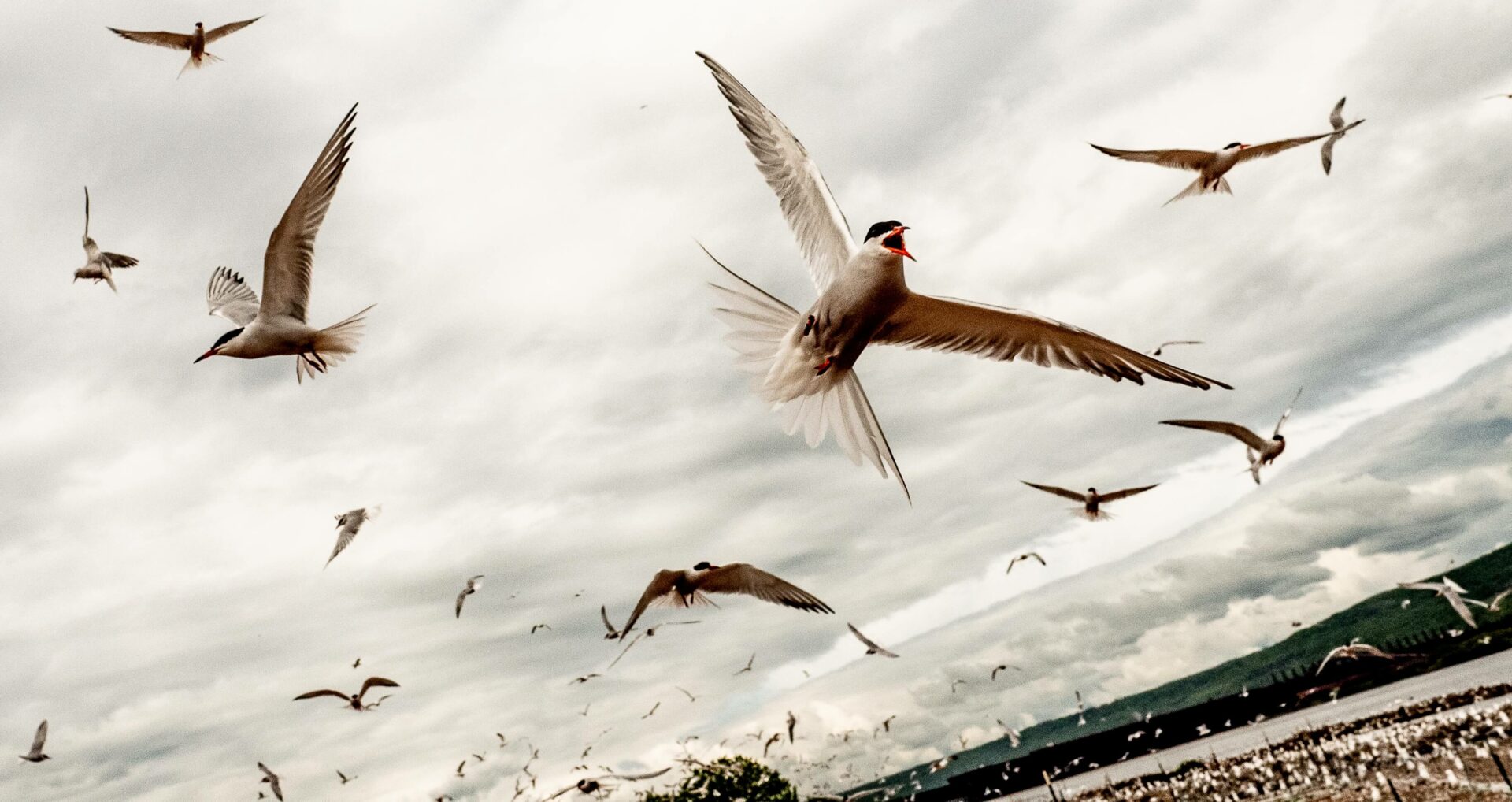
Expanding Interstate Island
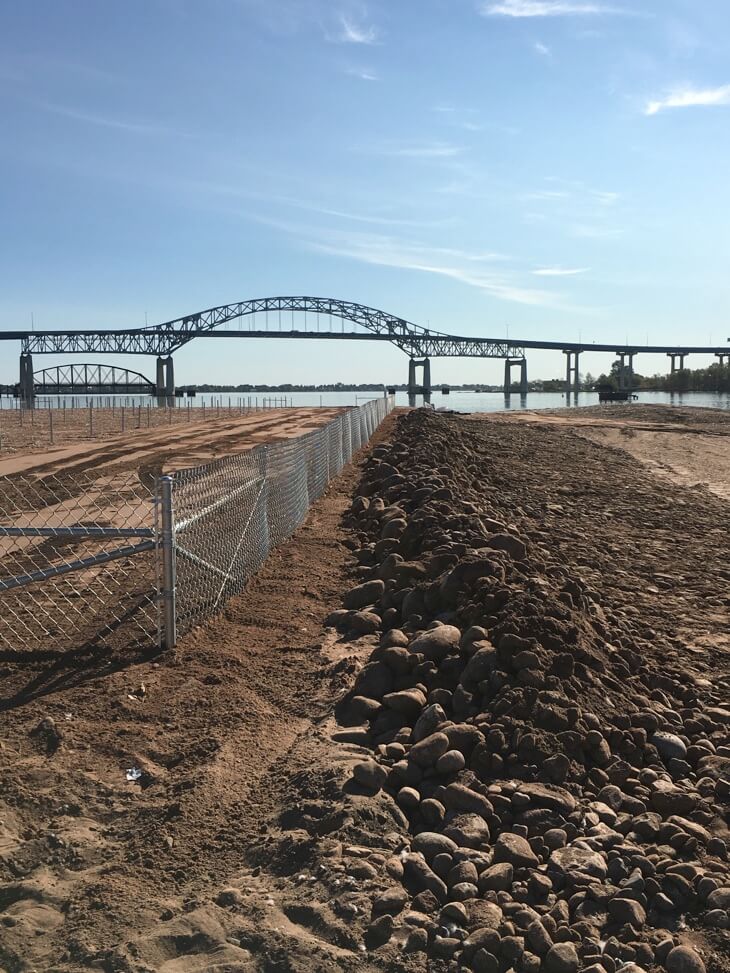
For years, wildlife managers at Minnesota DNR and Wisconsin DNR have supported the tern colony by maintaining a perimeter of chicken-wire fencing around the nesting area and a three-foot tall string grid overhead. This protects the tern nests because they can hover over the grid’s openings and land safely while gulls can’t navigate the openings as easily and tend to be deterred by the string.
Studies show that these measures have a positive impact, however, the loss of habitat due to flooding on the island made increased contact between the terns and gulls unavoidable, and that resulted in higher rates of predation on tern eggs and chicks by the gulls. In order to not just help the tern colony survive but meet recovery goals set by Wisconsin DNR, it was imperative to expand the island habitat.
The Interstate Island project includes several objectives that all support the goal of restoring the largest Common Tern nesting colony in the Lake Superior Watershed.
By fall 2020, woody vegetation had been removed from the island and the tern nesting area was raised by 3-4 feet. Additional protection was added for the vulnerable nests, including an upgraded permanent perimeter fence and rock berm.
The areas of the island subject to flooding were elevated, expanding the island from 2.5 acres to 6.7 acres of viable habitat during extreme high-water levels, and 8.7 acres during ordinary high-water periods. Expanding the island’s footprint added 900 feet of shoreline to the island.
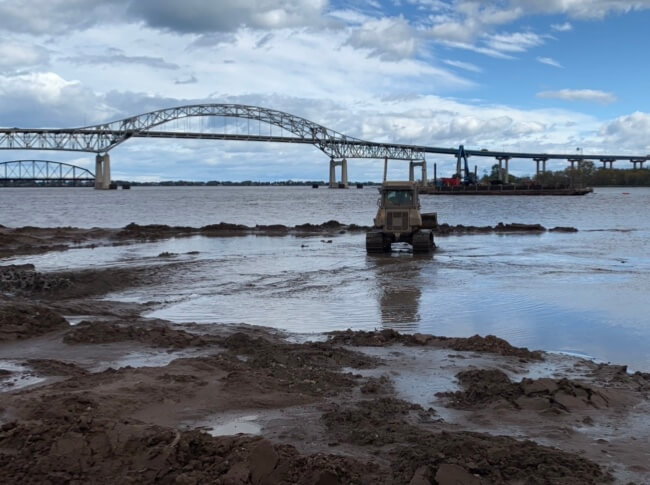
Learn about Phase 1 of the Interstate Island restoration project, and how increasing the tern nesting habitat helps support this species.
Shorebirds Benefit too!
Bird experts suspected Interstate Island was important habitat for shorebirds, but there was no data to support their suspicion. During a 4-year pre- and post-restoration study, an impressive and previously unknown array of shorebird species were documented using the space, 25 shorebird species and 35 other migratory birds in all, including the black-bellied plover, American golden-plover, killdeer, and stilt sandpiper.
The study findings and other observations of bird behavior on the island demonstrate how important this remote habitat is for birds. According to Steve Kolbe, University of Minnesota Duluth Natural Resources Research Institute (NRRI) Avian Ecologist, “Birds on Minnesota Point, where there are lots of people, are always flying around, head up, alert. But on Interstate Island we see them sleeping, heads tucked under their wing, sometimes for days. It’s a safe haven.” Whether it’s a stop-over point on a thousand-mile long journey or a place to raise young, the restoration investment is already paying off.
With this new information, conservationists and biologists can raise awareness about the habitat needs of shorebirds and seek further opportunities to support them.
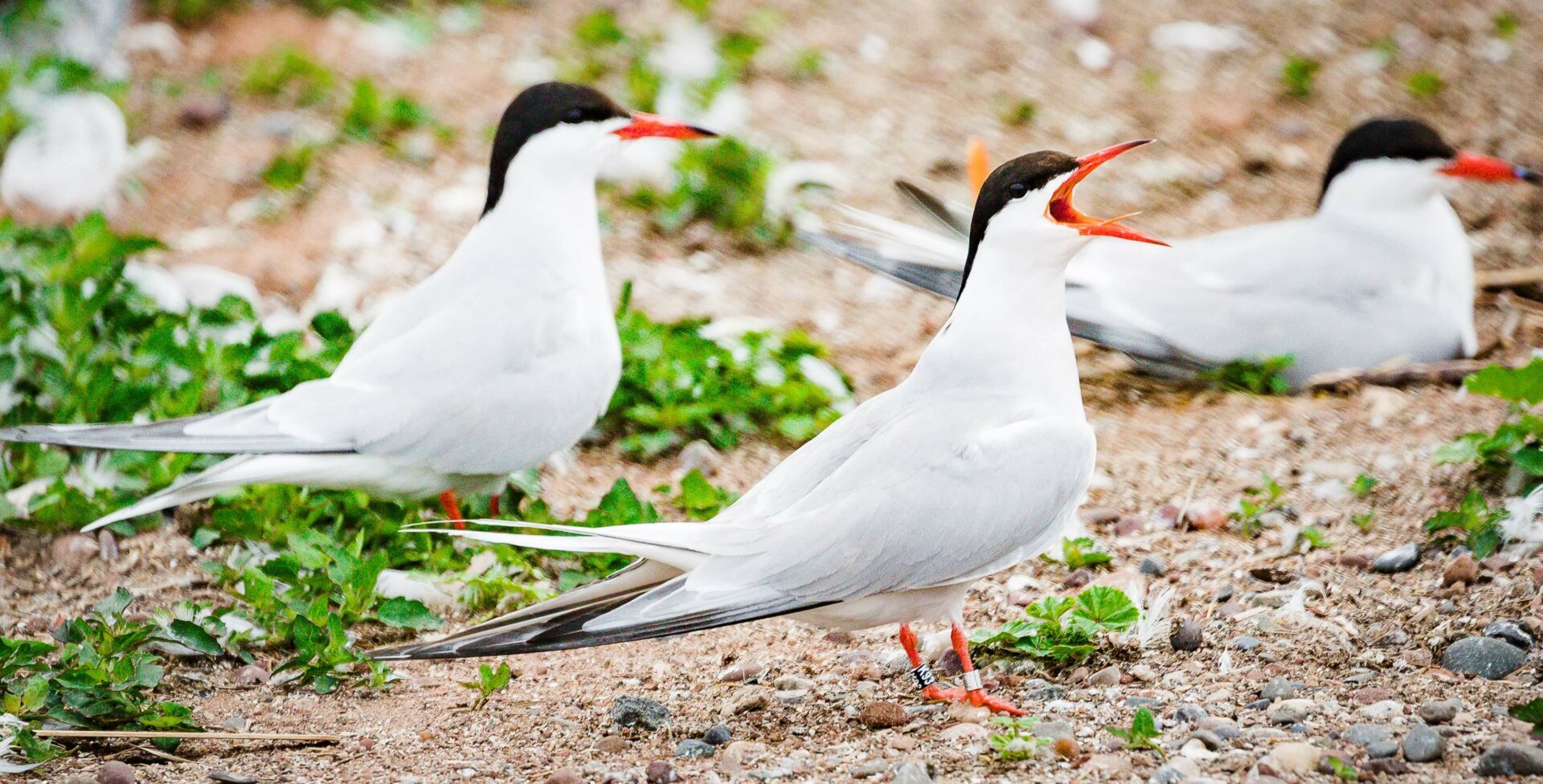
Adding Native Vegetation
The final phase of the restoration work began in the summer of 2022 and included planting three areas of the island with low-growing native vegetation, like beach grass, to help slow wind erosion and support the migrating shorebirds.
Keeping the island free of large woody vegetation like trees is important to protect the tern colony from predators, including owls, who would find a substantial population of easy prey on the island if given the opportunity to hunt there.
Briedenbach says, “Statewide there are less than 900 nesting pairs of the Common Tern, and with this coalition of partners working together, our hope is this threatened bird will have its place to nest and thrive into the future.”
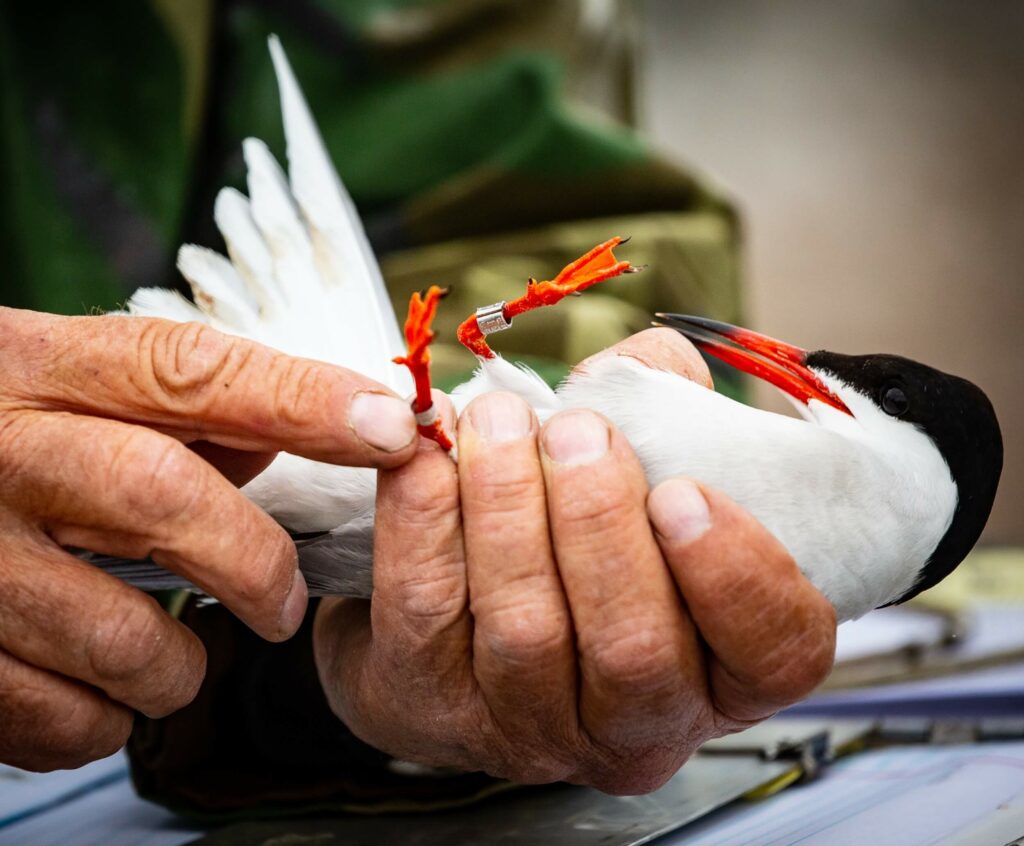
The Common Tern found a champion in Minnesota Land Trust and the group of partners and supporters that rallied around their cause. And as tends to be the case with interdependent ecosystems and habitats, impact has a ripple effect. The sustained and intentional work done on behalf of the Common Tern also positively impacts a host of migratory shorebirds.
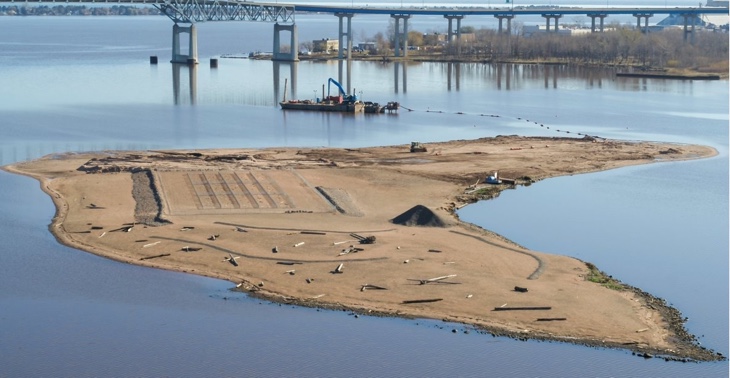
Will you become a champion for threatened habitats and wildlife in Minnesota?
Partnering with the Minnesota Land Trust as a financial supporter has a positive and far-reaching impact on Minnesota’s threatened habitats and species.

Funding for this restoration project was provided through Minnesota’s Outdoor Heritage Fund as appropriated by the Minnesota State Legislature and recommended by the Lessard-Sams Outdoor Heritage Council (LSOHC), the Great Lakes Restoration Initiative (NOAA, USEPA, USFWS), and Great Lakes Fish & Wildlife Restoration Act.




